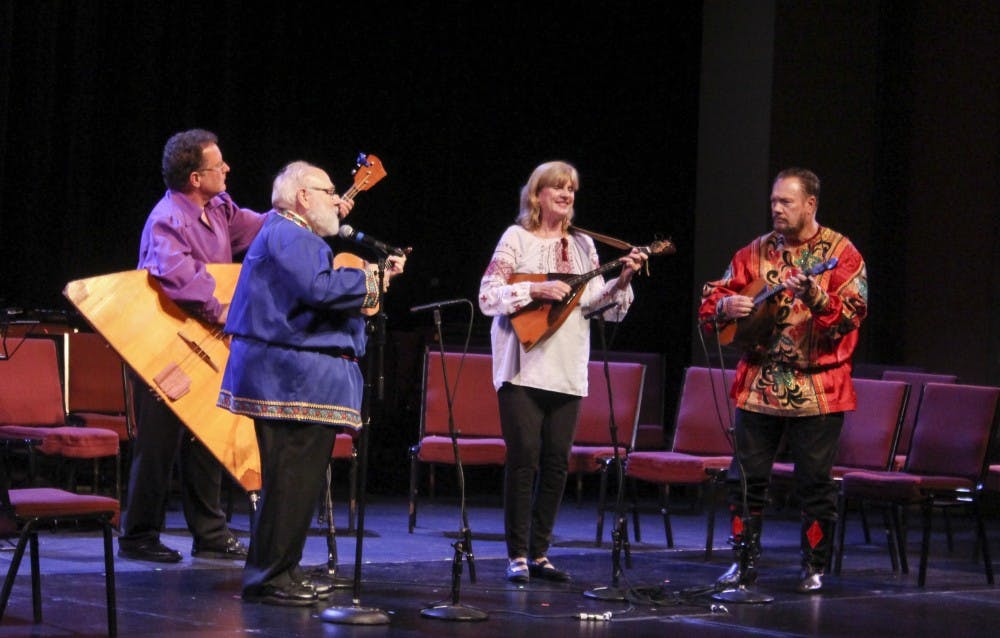The 38th annual Balalaika and Domra Association of America Convention came to a close July 23 at the Buskirk-Chumley Theater with its Russian Festival Concert.
The program featured selections from Russian, Gypsy and eastern European folk tradition.
Executive director and domra artist Maxwell McCullough spoke between each performance, starting with an introduction to folk instruments.
“When they named the society, they probably thought the Balalaika, Domra and Bayan Association of America was too long,” he said.
The association celebrates Russian folk instruments such as the balalaika, a triangular, three-stringed guitar; its oval-shaped cousin the domra; and the bayan, a Russian variant of the accordion, according to the BDAA website.
The domra and balalaika were developed in Russia from antiquity when the Mongols invaded Russia and brought with them the dombra, a similar plucked instrument, McCullough said.
The balalaika was associated with peasantry until 19th century violinist Vasily Andreyev standardized the construction of the instrument for the concert stage, according to the BDAA website.
Domras and balalaikas come in various sizes, growing as they descend in pitch, McCullough said. The smallest, highest balalaika is the size of a violin, while the large contrabass balalaika stands upright on an end pin, like a double bass.
The 2016 BDAA Convention began last July 17 in its first year in Bloomington. Each summer, association members and guests from various countries gather for a week of seminars and rehearsals, which culminates in the Russian Festival Concert.
The concert’s first act featured soloists and ensembles. A chamber group from the Washington Balalaika Society opened the performance, an ensemble including Festival Orchestra conductor Svetlana Nikonova on domra, balalaika soloist Andrei Saveliev and John Gardner on gusli, a stringed instrument resembling a Japanese koto.
They were followed by a reunion of four former members of the Great American Gyspy Band. Balalaika artist Judy Sherman joined them to sing the folk song “Gori, gori, lyubov tsyganki,” which roused the audience to rhythmic clapping and shouts of “Gori, gori!”
McCullough translated the title as “Burn, burn, Gypsy love.”
The headlining performers were the domra and guitar duo 9 String Theory, consisting of Angelina Galashenkova and John Huston, and balalaika artist Tetiana Khomenko.
Oliver Feschyn, 88, attended the concert with his daughter, Rosanne Emerick.
Feschyn’s grandparents were Ukrainian immigrants to Canada, Emerick said.
He grew up in a Ukrainian neighborhood of Chicago and said he had little interest in the evening’s folk music.
Feschyn learned about the BDAA convention after he saw a photo of Khomenko in the Herald-Times.
“The blouse she’s wearing is Ukrainian,” he said. “My mother had one like it.”
The photo shows Khomenko, a native of the Ukrainian capital Kiev, wearing a white blouse with red stitching and holding her balalaika.
The 2016 BDAA Festival Orchestra took the stage for the second act. The ensemble had around 80 members conducted by Nikonova. Along with strings, the group played accordions, wind instruments and percussion.
The concert ended with an arrangement of “I Could Have Danced All Night” from “My Fair Lady.”






